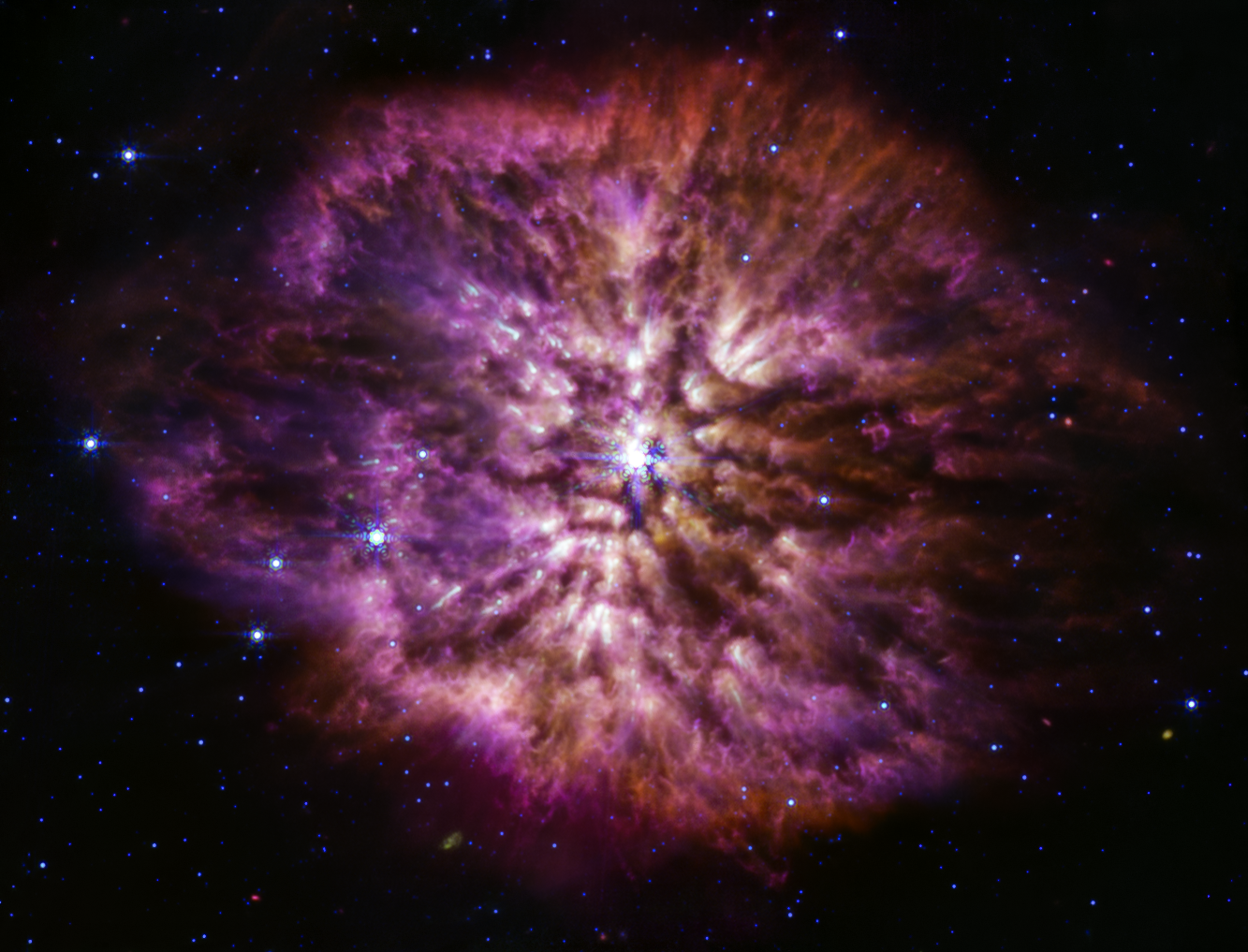The star WR 124, a star of 30 times the mass of the Sun, is going to be a supernova and the James Webb Telescope captured its brief Wolf-Rayet phase, in all its colors, before going supernova.
Massive stars race through their lifecycles, and only some of them go through a Wolf-Rayet phase before going supernova. Wolf-Rayet stars are in the process of casting off their outer layers, resulting in their characteristic halos of gas and dust.
As the ejected gas moves away from the star and cools, cosmic dust forms and glows in the infrared light.
There are new possibilities for studying details in cosmic dust, which is best observed in infrared wavelengths of light. Webb’s Near-Infrared Camera balances the brightness of WR 124’s stellar core and the knotty details in the fainter surrounding gas. The telescope’s Mid-Infrared Instrument reveals the clumpy structure of the gas and dust nebula of the ejected material now surrounding the star.

Webb’s detailed image of WR 124 shows forever a brief, turbulent time of transformation, and promises future discoveries. Similar dying stars first seeded the young universe with heavy elements forged in their cores, elements that are now common in the current era, including on Earth. Now these data could help atronomers to investigate the dust production in environments like WR 124.





